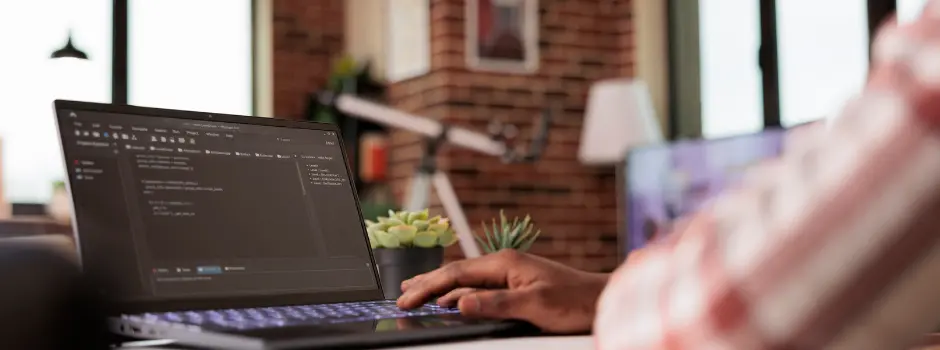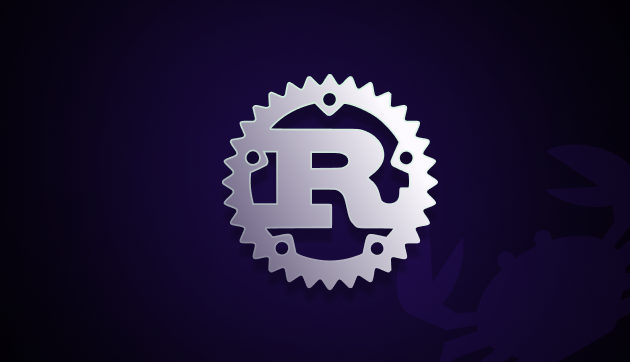
6 Best Front-End JavaScript Frameworks To Learn In 2024
Sep 06, 2024 4 Min Read 2869 Views
(Last Updated)
The first and most essential building blocks of the software development process are front-end frameworks. The majority of businesses emphasize user experience. What users see and feel must be seamless, no matter how complicated the functions and procedures in the background might be.
There are many choices to consider when it comes to creating visually pleasing applications with a high user experience. The sheer number of libraries and frameworks open to a new developer can be daunting. What’s the best way to figure out which ones you can learn to use? Which one would help you the most in your coding career? Here, we present an overview of the top six front-end JavaScript libraries and frameworks in this article which might help you answer these questions.
JavaScript Frameworks are a series of JS code libraries that provide you with pre-written JavaScript code for popular programming functions and tasks. So, it enables you to build websites or web applications quickly
Table of contents
- Best Front-End JavaScript Frameworks to Learn in 2024
- Angular- one of the best Javascript Frameworks
- Vue.js
- Svelte
- Next.js
- React
- Ember
- Conclusion on JavaScript Frameworks
Best Front-End JavaScript Frameworks to Learn in 2024
Do you want to know which are the best JavaScript libraries and frameworks used for front-end development and their key features? Then continue reading!
1. Angular- one of the best Javascript Frameworks
Best Features
- Angular allows you to create native and web applications on desktop and mobile platforms, and it’s especially well-suited to enterprise web applications.
- Angular also adheres to the MVC (Model-View-Controller) architectural pattern, giving you control over UI components and behaviours. You can manipulate DOM attributes in Angular to meet your needs.
- Two-way data binding, Angular CLI, directives, built-in dependency injection, virtual scrolling, and other notable features have made the framework extremely common among developers.
Top Companies using Angular
- Microsoft
- YouTube
Drawbacks of Angular
It has a steep learning curve because one must first learn some extra items like TypeScript and RxJS before being fluent with angular. Compared to other frameworks, the build bundle size is enormous, which has a massive impact on load times.
2. Vue.js
Vue.js, or Vue, is an open-source JavaScript platform for creating interactive user interfaces. It is an open-source progressive JavaScript platform developed in 2014. It has been rewritten and fine-tuned to become a fantastic single-page application.
Best Features
- Components, models, transformations, and two-way data binding, and an emphasis on reactivity are among its features.
- Vue comes with a dedicated library for managing applications. We can easily combine Vue with existing projects and other JS libraries because it is a progressive platform.
- It’s also an MVVM (Model-View-View-Model) platform, with the core library focusing solely on the view layer.
- The system also supports declarative rendering and part composition.
- Other notable Vue features include event handling, templates and directives, the Vue.js CLI, modules, transitions, reactivity focus, and many more.
Top Companies using Vue
- Stack Overflow
- GitLab
- Adobe
Drawbacks of Vue
A significant drawback of Vue is that it isn’t as stable as Angular and can’t be used to build advanced front-end projects. Also, working with tools like external stylesheets, fonts, and images can be a nightmare for a novice.
Before diving into the next section, ensure you’re solid on full-stack development essentials like front-end frameworks, back-end technologies, and database management. If you are looking for a detailed Full Stack Development career program, you can join GUVI’s Full Stack Development Career Program with placement assistance. You will be able to master the MERN stack (MongoDB, Express.js, React, Node.js) and build real-life projects.
Additionally, if you want to explore JavaScript through a self-paced course, try GUVI’s JavaScript self-paced certification course.
3. Svelte
Best Features
- It has a simple and easy-to-understand syntax.
- When the program is updating the DOM, it generally does not inject any overhead code to run. As a result, web apps built with Svelte are typically faster than those made with other frameworks.
- Svelte has many notable features, including improved speed and performance, less code, no virtual DOM, and more.
- It doesn’t have any complicated management libraries and provides better performance.
Top Companies using Svelte
- Codustry
- Screeb
- Kontist
- OmniaWrite
Drawbacks of Svelte
Svelte’s main disadvantage is that it is still relatively new, so it lacks the community support of Angular, Vue, or React. Furthermore, jobs that require Svelte as a skill are uncommon.
4. Next.js
Next.js is a free and open-source front-end Javascript Framework. It is a React-based framework that is very common among developers due to its server-side renderability.
It enables you to build Jamstack and server-based applications while adhering to best development practices.
Next.js, on the other hand, mainly supported CSS and styled JSX, as well as other technologies.
Best Features of this JavaScript Framework
- It is also written in TypeScript, allowing JavaScript modules and React components to be dynamically imported.
- Next.js has several valuable features, including automated code-splitting, automatic routing, SEO support, prefetching, and more.
- It also includes a static export function that allows you to export a fully static site from the application.
- Redirect support, gradual static regeneration, and several other new features and functionalities have been released in the current version of Next.js.
Top Companies using Next.js
It is used by companies like
- Netflix
- Uber
- Starbucks
- GitHub
- Avocode etc.
Drawbacks of Next.js
Even though NextJS is rapidly evolving and adding new functionality, it still has some drawbacks. Since Next.js doesn’t have many built-in front pages, you’ll have to build the entire front-end layer from scratch. You can only use NextJS’s file-based router; you can’t change the way it handles routes.

5. React
In the world of JavaScript, React is unquestionably the popular front-end javascript framework. This JavaScript framework takes a reactive approach to front-end web creation and incorporates several new concepts.
React is a UI component framework that permits integration with other JavaScript libraries to build reusable UI components.
Best Features
- It can create apps for any type of user interface, including web, desktop, and others, and it is highly recommended for creating SPAs (Single Page Applications) and business applications.
- React employs JSX, an XML-style syntax that incorporates JavaScript and HTML. It’s not a templating language; it’s JavaScript in its purest form.
- It combines the following features: reusable modules, state, and view synchronization, and a routing and template framework.
- It also follows the MVC model and includes features such as One-way Data Binding, Virtual DOM, Event Handling, and more.
Top Companies using React
- Yahoo mail
Drawbacks of React
- The disadvantage of using React is that building massive, complex web apps with react can quickly turn into a nightmare if you have not carefully planned your code structure.
- Another disadvantage is that React only allows data to flow in one direction, which means that only parent components can transfer data to their children, not the other way around.
6. Ember
Ember is one of the oldest front-end JavaScript frameworks.
It is an open-source JavaScript project created and published in 2011. It was formerly known as SproutCore 2.0 before being renamed Ember.js.
Best Features
- Ember.js is a web platform that follows the MVC (Model-View-Controller) design pattern, which can be used to create mobile and desktop applications.
- It also considers HTML and CSS to be the foundation of its development model, and its backend architecture allows you to write advanced HTML tags.
- It has templates for quickly creating simple pages and dynamically loading content using components and helpers.
- Ember.js includes a separate data layer, models or handlebars, a built-in testing environment, and a slew of other features and functions.
- The Glimmer rendering engine is included, which allows you to render DOM elements from the template.
- Ember has an excellent build method called Ember CLI that many other SPA frameworks have borrowed. The command-line interface helps you run browser tests, auto-reload components, and quickly restore, among other things.
Top Companies Using Ember
- Apple,
- Microsoft,
- LinkedIn,
- Netflix
Drawbacks of Ember
Complications with swift processing changes, smaller communities, and outdated tutorials on the web are all disadvantages of Ember. It’s also the most substantial of the frameworks.
Kickstart your Full Stack Development journey by enrolling in GUVI’s certified Full Stack Development Career Program with placement assistance where you will master the MERN stack (MongoDB, Express.js, React, Node.js) and build interesting real-life projects. This program is crafted by our team of experts to help you upskill and assist you in placements.
Alternatively, if you want to explore JavaScript through a self-paced course, try GUVI’s JavaScript self-paced course.
Conclusion on JavaScript Frameworks
Working as a front-end developer gives you many choices, so knowing which JS libraries and frameworks are best for which scenarios is crucial.
Frontend JavaScript frameworks have far more than the ability to create single-page applications; they also make our codebase far simpler to manage by offering that abstract away a lot of code and preventing duplication. Conditional rendering, conditional styling, the ability to emit custom events, and a central data store are all included in its features.
































Did you enjoy this article?